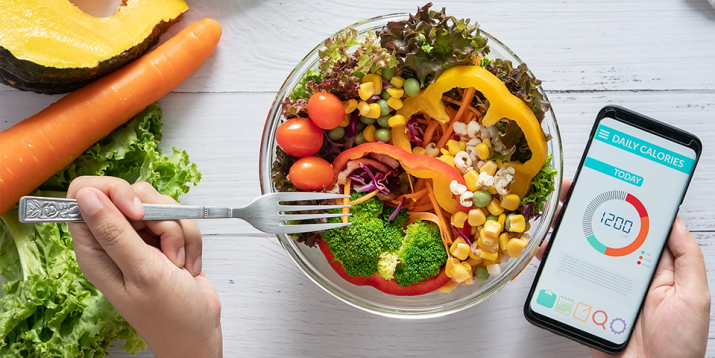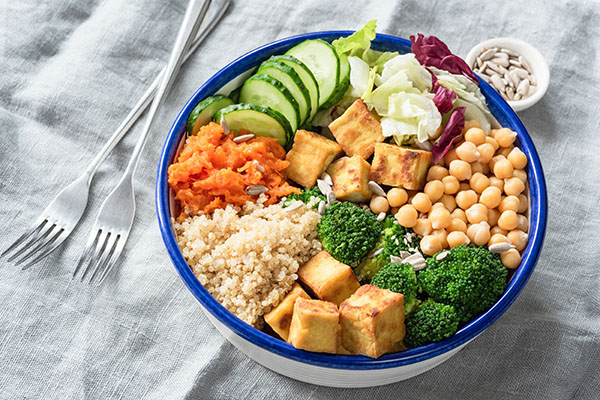What Is the CICO Diet and Can It Help You Lose Weight?

One Redditor gave CICO a shot and enthusiastically posted, “2 months ago I started actually counting calories and using CICO, and the weight has melted off… I’ve still been eating what I like, including fast food!”
Before you switch diet gears, let’s explore what CICO is all about.
What Is the CICO Diet?

CICO is the catchy acronym for “calories in, calories out,” and is centered around a simple concept: If you eat fewer calories than you burn, then you will lose weight.
You can practice CICO while eating a vegan diet, a low-carb diet, or doing intermittent fasting.
Advocates of CICO like its minimalistic focus on calories. Unlike low-carb diets such as the keto diet, you do not need to give up pasta or avoid any foods.
But, you will need to track your meals, count up those calories, and make sure the total is below your caloric needs.
How Does CICO Work?
To lose weight with CICO, you must cut calories to put your body into negative energy balance.
Calories are simply a measure of energy. Think of the body as a bank account and calories as the currency.
Calories coming in must be spent, or they’re stored in a rainy day fund, also known as your fat and muscle tissues.
Unless you’re a bodybuilder or exercising enough to shift your hormones towards muscle growth, most of these extra calories will be stored as fat.
By eating less and giving your body fewer calories, you force it to burn stored calories.
This, in turn, helps you lose bodyweight, about 60 to 80% of which comes from stored fat.
What Are the Potential Benefits of CICO?

As a weight-loss tool, calorie counting can help you stay accountable. You may even feel accomplished every time you hit your daily calorie goal.
Keeping a consistent log of your current eating habits can help you understand your body.
One Redditor revealed that CICO is about, “… relearning to eat in a manner I would be if I was at my ideal size.” Other benefits include:
1. It’s (mostly) based on sound science.
Despite its recent popularity, CICO is not a new idea. Experts have known about and generally, agree reducing calorie intake is effective for weight loss.
Large health organizations such as the National Institutes of Health and the Centers for Disease Control and Prevention recommend a reduction in calories for healthy weight loss and maintenance.
Registered Dietitian Andrea N. Giancoli, MPH, RD adds, “We tend to underestimate how much we eat. A strategy like CICO can help you take a hard look at the number of calories that go into your body.”
2. It can promote a better relationship with food.
If you’ve struggled to avoid certain foods while following a diet, you know that avoiding specific foods can actually increase your desire for them.
CICO can be freeing because there are no “forbidden” foods. Enjoy any food, no need to lust after chocolate or defy pizza.
3. It’s not about short-term dieting.
Diets come and go. You can start off extremely motivated to melt off the extra pounds, but it won’t save you from feeling frustrated.
That’s because most diets don’t work.
As this Clinical Journal of Nutrition article points out just 20% of overweight individuals succeed at maintaining weight loss for at least one year.
Of the individuals that do succeed, 43% count calories and 44% limit how much food they eat.
These strategies are consistent with CICO, which is most effective when it can be sustained in the long run.
What Are the Potential Risks of CICO?

So, does CICO deserve the hype? It may sound like CICO is worth a shot, but this simple strategy may not be your cup of tea.
Individual genetics, schedules, and preferences vary.
Read up on the potential risks below and consult an experienced dietitian if you’re still unsure whether CICO is for you.
1. It’s not for everyone.
Counting calories is critical for CICO, but it’s hard to stick to. People notoriously ditch calorie counting apps because food logging is tedious.
As this 2014 study found, despite reporting high levels of satisfaction with a popular calorie counting app, usage dropped sharply from 97% in the first month to 55% in the second month.
From a mental health perspective, CICO may not be suitable for individuals with an unhealthy obsession over body weight.
The National Eating Disorder Association lists the preoccupation with calories as a potential symptom for an eating disorder.
Of course, not everyone who counts calories has an eating disorder, and for them, CICO is not a risk.
But, Giancoli says the line is not always clear.
“CICO, or any diet strategy for that matter, should not take over your life. If you find yourself obsessing over calories, take a step back. You’re doing this for your health, so it’s important to be mindful of that,” she advises
2. It assumes all calories are created equal.
CICO focuses on calories but ignores the different calorie types. All foods carry calories from various macronutrients (e.g., fat, protein, carbohydrates, and alcohol).
Your body responds differently to each macronutrient and CICO does not account for these differences.
For example, foods high in protein and fat may help with fullness. Protein foods also burn more calories during digestion.
One of the CICO perks, being able to eat whatever you want, is also a downside.
CICO also ignores valuable vitamins, minerals, and phytochemicals found in fresh fruits, vegetables, and whole grains.
Sure, this professor lost 27 pounds on The Twinkie Diet because he cut calories, but that doesn’t guarantee he will maintain good health in the long run.
Eating a diet high in fast food or overly processed food can make you feel lousy even while losing weight.
3. It’s oversimplified.
Most people who practice CICO will calculate their calorie needs with an online calculator.
These calculations are not always accurate, and you can end up overestimating or underestimating the number of calories you need for weight loss.
After all, a lean 180-pound male is more active and will need more calories at rest than a 180-pound overweight individual.
This is often not reflected in calorie calculations.
Will CICO Help Me Lose Weight?

Yes, you can use CICO to lose weight safely and keep it off. Just understand that it’s a lifestyle change and not a quick fix.
If you’re still interested in CICO, follow these quick tips to get started:
1. Calculate your daily calorie goal, then adjust.
The easiest choice is to download a calorie counting app such as MyFitnessPal, Lose It!, Lifesum, or Fitbit.
They help determine your energy needs and let you log calories digitally. These apps calculate calorie goal based on your:
- Basal metabolic rate (BMR): Energy needs just to fuel basic functions. BMR varies based on your height, weight, gender, and age.
- Activity level: Energy needs are higher for active individuals.
- Weigh goal: Calories are subtracted for weight loss and added for weight gain.
The con of these apps is your energy needs are not 100% personalized, and you may need to self-adjust by increasing your calorie goal if you constantly feel hungry or decreasing your calorie goal if you’re not seeing results.
2. Set reminders to log.
The best time to log a meal is before you eat it. The next best time is as soon as possible.
Set a reminder on your phone to log meals, so you don’t forget what you ate. Food logging fatigue is a struggle.
If the reminders don’t work, take a photo of your food and try to log when it’s convenient.
3. Watch your portion size.
If you’re new to CICO, portioning food may feel difficult.
A food scale gives you food weights in grams, which will convert into accurate calorie counts.
Don’t want to invest in a food scale? Use measuring cups and spoons, just don’t rely on eyeballing.
4. Don’t just rely on CICO.
Just because CICO is focused on calories does not mean you have free rein to sacrifice diet quality.
According to Giancoli, “Choosing lower-calorie, nutrient-dense foods such as fruits and vegetables is true to the CICO ethos. Because they have fiber and bulk, whole fruits and veggies can help you feel full, making it easier to stick to your calorie goal.”
Other beneficial foods groups to round out your diet include whole grains, lean protein, and healthy fats.
Finally, be patient.
Getting to your goal weight takes time. If you’re impatient with the waiting game, focus on other areas that also affect your body weight.
Do a workout you love, try to relieve stress with meditation, or give yourself permission to sleep in.

If you’re wary of diet fads, you may be eyeing CICO with a healthy dose of skepticism.
In the past few years, CICO gained internet fame, especially from success stories starring extreme weight loss results like this Redditor who lost 180 pounds in a year!